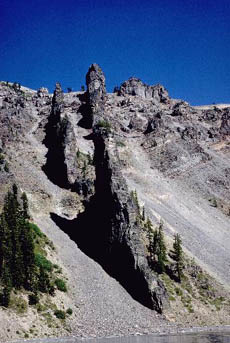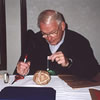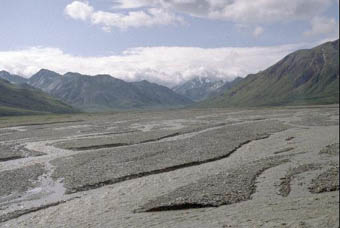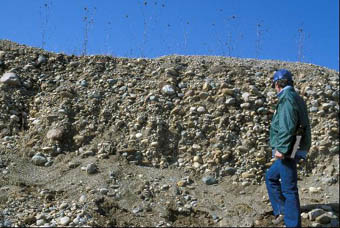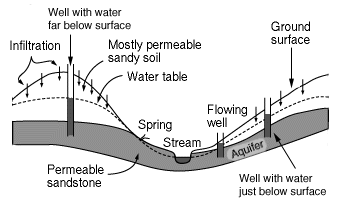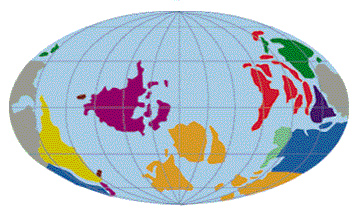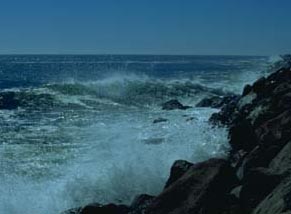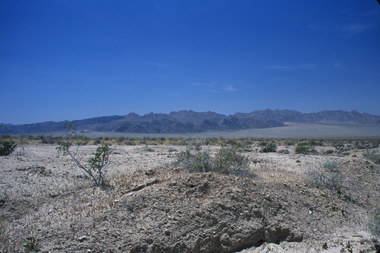Click on image for full size
Courtesy of Jerome Wyckoff
Step 1: Breaking Rocks Apart
Over time, rocks exposed at the Earth’s surface wear away. This is called weathering. There is two types of weathering that break rocks apart.
By chemical weathering, the minerals in rocks are dissolved into rainwater or changed from one type of mineral into another. Chemical weathering happens quickly in warm, moist environments because water is needed for the chemical changes and warmth speeds up the process. Not all minerals are susceptible to chemical weathering. For instance, feldspar and quartz, the most common minerals in the igneous rock granite, have very different levels of resistance to chemical weathering. Quartz doesn’t weather very easily, but feldspar does. Over a long time, it chemically changes into clay minerals.
By physical weathering, rocks are broken apart into smaller pieces. There are many ways that rocks are physically weathered. Water flowing in rivers and streams can break rock apart, as can ocean waves on a rocky coastline. Tree and plant roots often push rocks apart, especially when they grow in areas with little topsoil. If water freezes into cracks in a rock it will expand as it freezes, opening the crack even more. Large amounts of ice were responsible for physical weathering of rocks during the last Ice Age. They scraped the surface of vast areas of the land, removing bits of the rocks they moved across. Smaller glaciers continue this process in some areas of the Earth today.
Weathered rock fragments are either moved away by water or wind, or they become a part of the soil. Soil is formed as rocks are weathered at the surface and combined with plant and animal remains. There are many different types of soil depending on rock weathering and the amount of plants and animals in the environment.


